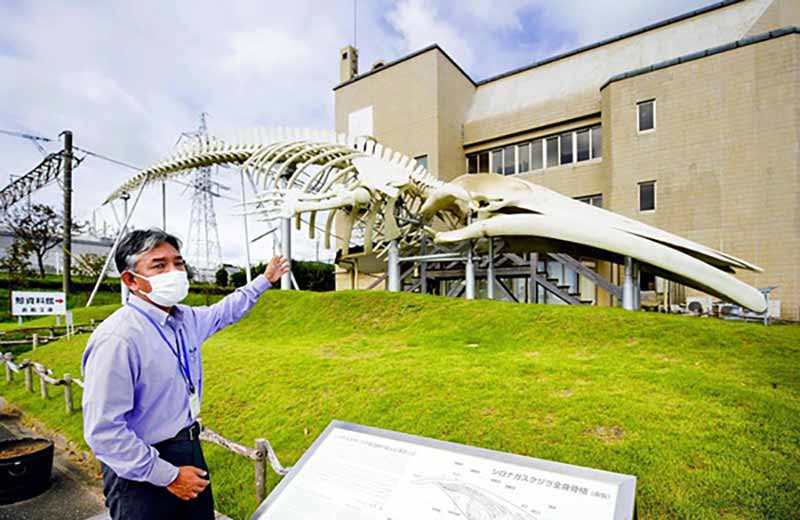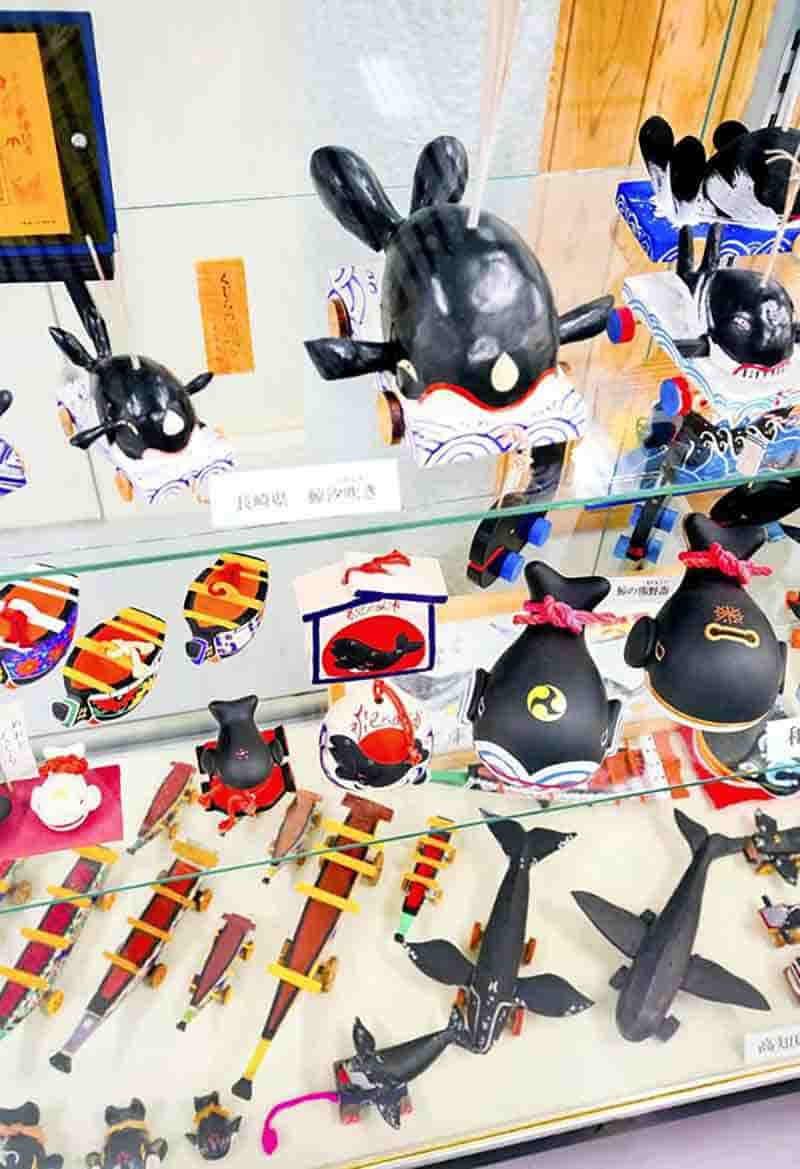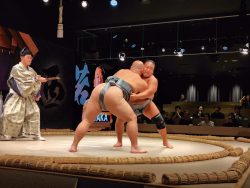
The replica skeleton of a blue whale that was caught off the coast of Norway in the 1880s.
November 30, 2021
The connection between humans and whales has existed for thousands of years, evidenced by whale bones discovered with remains that date back to the Jomon period (ca 10,000 B.C.-ca 300 B.C.).
The only area in the Kanto region where whaling is currently being conducted is Wadaura in Minami-Boso, Chiba Prefecture, as the whalers hunt Baird’s beaked whales. Although eating whale meat has become less common, exhibits at the Kujira Shiryokan museum in the city’s Wada community center describe the whaling culture that once existed in Japan.
At the entrance, visitors are met by a 26-meter-long replica of a blue whale’s skeleton. Even though I knew it was a replica, seeing the skeleton of the largest animal on earth was quite overwhelming.

Large knives and harpoons that were used by whalers in the Awa region, present-day southern Chiba Prefecture, are on display.
Tsuyoshi Hirashima, 54, the director of the community center, said he hopes people will come to see one of Japan’s most valuable whaling-related collections up close.
Among the displays are folk toys from all over Japan, including Nagasaki, Kochi and Miyagi prefectures. Japanese people believed whales that drifted ashore were a blessing from the sea.
Organized whaling began nearly 400 years ago in the Boso Peninsula in the Awa region — present-day southern Chiba Prefecture. Whalers would hunt Baird’s beaked whales when the animals arrived in summer. Since the whales can dive for as long as an hour, it is thought that the whalers had to rely on experience and intuition to catch the mammals the moment they surfaced.

Textbooks from the Meiji era describe the dangers of whaling.
Textbooks from the Meiji era (1868-1912) on display describe the dangers of whaling. It was humbling to see the harpoons and large knives used in hunting whales and then imagine eating the life that was taken in the struggle.
In contrast to the difficulties at sea, it is said people eagerly waited on the beach to see the catch. Ota Nampo, a literary figure during the Edo period (1603-1867) also known as Shokusanjin, wrote a tanka poem about the excitement on the beach.
The main purpose of whaling was for the animal’s oil, but after World War II — when Wadaura became a major whaling area — consuming the meat became popular.

Brightly colored whale-related folk toys from all over Japan
“Flags would be raised in the port when a whale was caught,” said Yachiyo Ichihara, 72, a member of the Wadaura whale food culture study group. “It was an exciting time as people would all gather with buckets in hand.”
Even today, families make a local dish called kujira no tare, in which whale meat is marinated in soy sauce or a salt-based sauce and dried in the sun. The dish is said to be essential at any party or family gathering.

“We have to preserve traditional food,” Ichihara said.
After listening to her, I felt as if I was able to get a glimpse into today’s whaling culture.
Related Tags
"Features" POPULAR ARTICLE
-

Students Recreate 19th-Century Bento Boxes Made for Ino Tadataka’s Survey Team in Hot Spring Town on Nakasendo Road
-

Santa Claus Delivers Christmas Presents to Penguins at Aquarium in Japan’s Nagasaki Prefecture
-

Sumo Restaurant in Tokyo Teaches Foreign Visitors About the Ancient Sport, with Bouts Between Retired Rikishi
-

Autonomous Passenger Ship Connects Mainland with Remote Island in Seto Inland Sea; World’s 1st Commercially Operated Autonomous Vessel
-

Osaka’s Sumiyoshi Taisha Shrine Bustles with New Year’s Visitors
JN ACCESS RANKING
-

As Chinese Tourists Shun Japan, Hotels and Stores Suffer
-

Osaka-Kansai Expo’s Economic Impact Estimated at ¥3.6 Trillion, Takes Actual Visitor Numbers into Account
-

Japan Govt Adopts Measures to Curb Mega Solar Power Plant Projects Amid Environmental Concerns
-

BOJ Gov. Ueda: Highly Likely Mechanism for Rising Wages, Prices Will Be Maintained
-

Economic Security Panels Debate Supply Chains, Rare Earths; Participants Emphasize Importance of Cooperation Among Allies




























